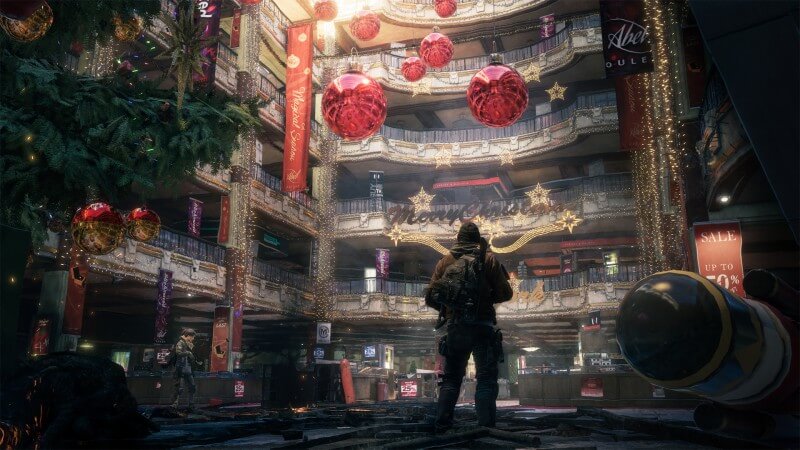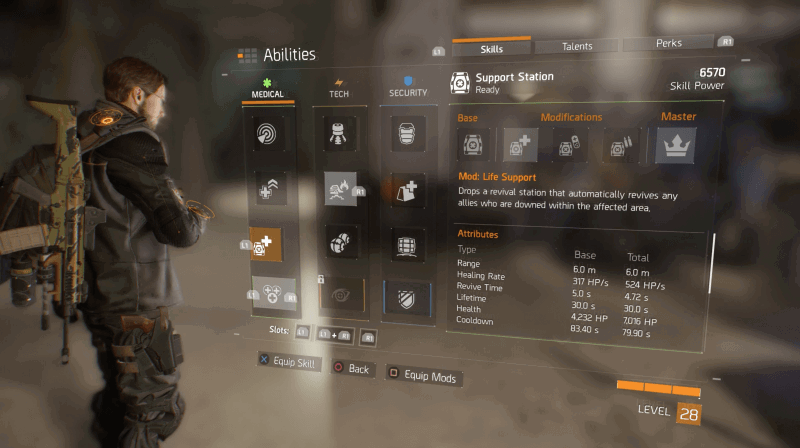Title: The Division
Version Tested On: PS4
Available On: PS4,
Developer: Ubisoft Massive
Publisher: Ubisoft
Genre: Action, Shooter, RPG, MMO
Official Site: https://division.zone/
Release Date: March 8th, 2016
Where To Buy: Steam, PSN,
After nearly 50 hours in a pandemically destroyed New York City, I have emerged with only a few battle scars and a lot of war stories to tell. The Division is an RPG/MMO hybrid, wrapped up in the look and feel of a third-person cover-based shooter. Make no mistake, the push to always obtain better loot drives the game forward well beyond the roll of the credits. With an incredibly engrossing world and solid gameplay, only inconsistent A.I. and a lackluster story keep The Division from being one of the best games of the year.
You are an agent of the Division tasked with taking back New York City after a deadly virus was released during Black Friday. The city has been quarantined and fallen into chaos, leaving you and your fellow agents with the job of putting the pieces back together. Or at least, that’s what it should feel like. In reality, your interaction with other human players is surprisingly limited outside of either “The Dark Zone,” a scattered handful of safe houses, or with those you directly join via matchmaking. Don’t expect to see other agents roaming the streets by themselves, as you are very much alone out there. This hinders The Division’s story as it undermines the idea that a massive effort is taking place to reclaim New York City from the various gangs.

It also doesn’t help that The Division offers some less than memorable characters that you may find difficult to invest in. Though they make their problems fairly known (and frequent!), it never serves any more purpose but to push the main story forward. Thankfully the second half of The Division improves upon the narrative with the introduction of a more interesting antagonist, but it’s too little, too late. Even the various enemy factions are fairly by the books with the exception of the flamethrower-toting Cleaners. Most of the real story comes from exploring the city itself, various phone conversations, digital recreations called Echos, and surveillance footage you acquire. There’s something unsettling about listening to the demise of an entire city through pieces and fragments, but this only helps to enhance an already rich world.
Speaking of the world, The Division‘s recreation of New York City is both strikingly beautiful and haunting at the same time. As someone who lives just outside of the city itself, the level of detail and authenticity put into recreating Midtown rivals that of any game made by Rockstar. NYC has more to offer than just her good looks though as everything in The Division blends seamlessly without the use of loading screens. Missions and side objectives can be activated organically, along with entering and playing in the walled off area dubbed “The Dark Zone.” For those wanting to explore, Midtown offers a host of buildings, back alleys, subway tunnels, and famous landmarks to discover and loot. There are still some civilians left and you may stumble upon some fairly troubling scenes in your trip through New York, such as a couple fighting over the last scraps of food.

Thankfully the main missions are more varied than one might expect with slight twists to the “go here, shoot the bad guys, kill the boss” formula The Division so readily sticks too. One mission sees you having to advance on an enemy faction’s position while automated turrets fire at you, with another having you destroy napalm tanks as you progress. Unfortunately, this doesn’t progress to the side missions which quickly grow extremely dull and repetitive.
Sadly the enemy A.I. isn’t anything special either, as they just stand around in predetermined areas waiting for the player to come along so they can shoot at them. Don’t expect to stumble on any roaming gangs of escaped convicts, as much of the combat is instigated by the player. The A.I. is a grab bag when it comes to competence, as there are obvious inconsistencies when it comes to their combat prowess. Some will suppress you with sniper fire as they flank you from both sides while others just run at you in a straight line making them easy pickings for even the worst of sharpshooters. Each faction pretty much has the same layout, with only small changes made between enemy groups. This sadly makes engagements fairly predictable, especially when coupled to the less than interesting bosses who are just more powerful versions of other enemy types.

Speaking of combat, The Division offers some of the best cover based shooting you will find in the market today. Hiding behind walls and other structures is easy and fluid, letting you transfer from cover by just holding down a single button. Gunplay is solid, with each weapon type feeling distinctly different in function and use, allowing for players to go about firefights in their own way. While you are restricted to only being able to carry three weapons, two main guns and a side arm, switching firearms mid-combat or on the movie is fast and easy. This kind of customization is not just for your weapon’s load out but extends to the flushed out abilities each agent has access too.
Subverting the usual RPG layout of applying skill points to a certain talent branch, The Division doesn’t force you to commit to a certain style of play. Each of the three skill trees, Medical, Tech, and Security feel wholly unique from one another which allows for some interesting customization options. Medical allows for the deployment of healing stations and pulses that outline hidden enemies while Tech is focused on using powerful gadgets to turn the tide of battle. Security is more focused on defensive capabilities such as carrying a powerful Ballistic Shield or applying mobile cover. Though a player can only have two skills active at any time, they can be modded with one of three choices adding another layer of depth and strategy to one’s choices. Backing this are talents and perks, which offer unique twists on abilities and passive effects such as increased carrying capacity and unlocking an advanced weapons vendor. All of this culminates into allowing the player extreme freedom with how they want to tackle engagements as these abilities can be swapped out on the fly with no penalty to the player.

Yet, the best aspect of The Division has nothing to do with the core “single player” experience as The Dark Zone stands head and shoulders above the rest of the game. Acting as a PvPvE (Player vs. Player vs Environment) this mode sees agents trying to secure contaminated loot from high-level enemies and chests, in order to extract via helicopter. The catch is any other player in this zone can shoot and kill you, taking any of the loot you have picked up for their own use. Doing this makes the player turn “Rogue” which puts a big skull over their head with a timer that counts down signaling to all other users that he effectively has a bounty on his head. The Dark Zone is a fairly straight forward mode in design, but it’s the real mental and moral choices it gives you that allows it to stand out. Going Rogue is a doubled edged sword as it can usually guarantee easy loot, but you are then at risk of being hunted like a dog until the timer expires.
This lends itself to some incredibly tense and thrilling standoffs as you will find yourself making uneasy alliances with other players based on a precarious relationship. You never know when someone might betray you and take your hard earned gear for themselves, so the tension in The Dark Zone is always high. There is a clear uniqueness to the way engagements play out as you never know exactly who or when someone may turn Rogue. This forces a completely different style of play as you always need to be on your toes, checking your surroundings constantly for ambushes or traps left by other agents. Combat here is fast, merciless and downright dirty as marauding groups of four prey upon those who decided to enter solo. Though the experience is quite difficult if you are a solo player, The Division is a fairly easy game to find cooperative partners to assist you.
The Division is a game that delivers a fun and enjoyable experience that keeps me wanting to come back to NYC. The Dark Zone offers some of the best multiplayer experiences I have had in recent memory and the ability to constantly change your skills around offers extensive replayability. While the A.I. could use some work along with the story/characters this didn’t detract extensively from my experiences. It may not have lived up to the overwhelming hype it developed, but The Division doesn’t make me want to escape New York anytime soon.
[embedyt] https://www.youtube.com/watch?v=7iHzKiakpcw[/embedyt]
- Gameplay: With both solid gunplay and cover systems, The Division offers a stellar third-person experience that is enhanced by a balanced loot progression system.
- Graphics: New York City has never looked better, or worse? Burned out buildings, beautiful textures and decent character models help bring this viral outbreak to life.
- Sound: The cracking of gunshots, cries of help, and haunting silence of Times Square will set you on edge as you explore everything the city has to offer.
- Presentation: While the game looked great, it sadly suffered from a lackluster story and forgettable characters/villains.
[review]







